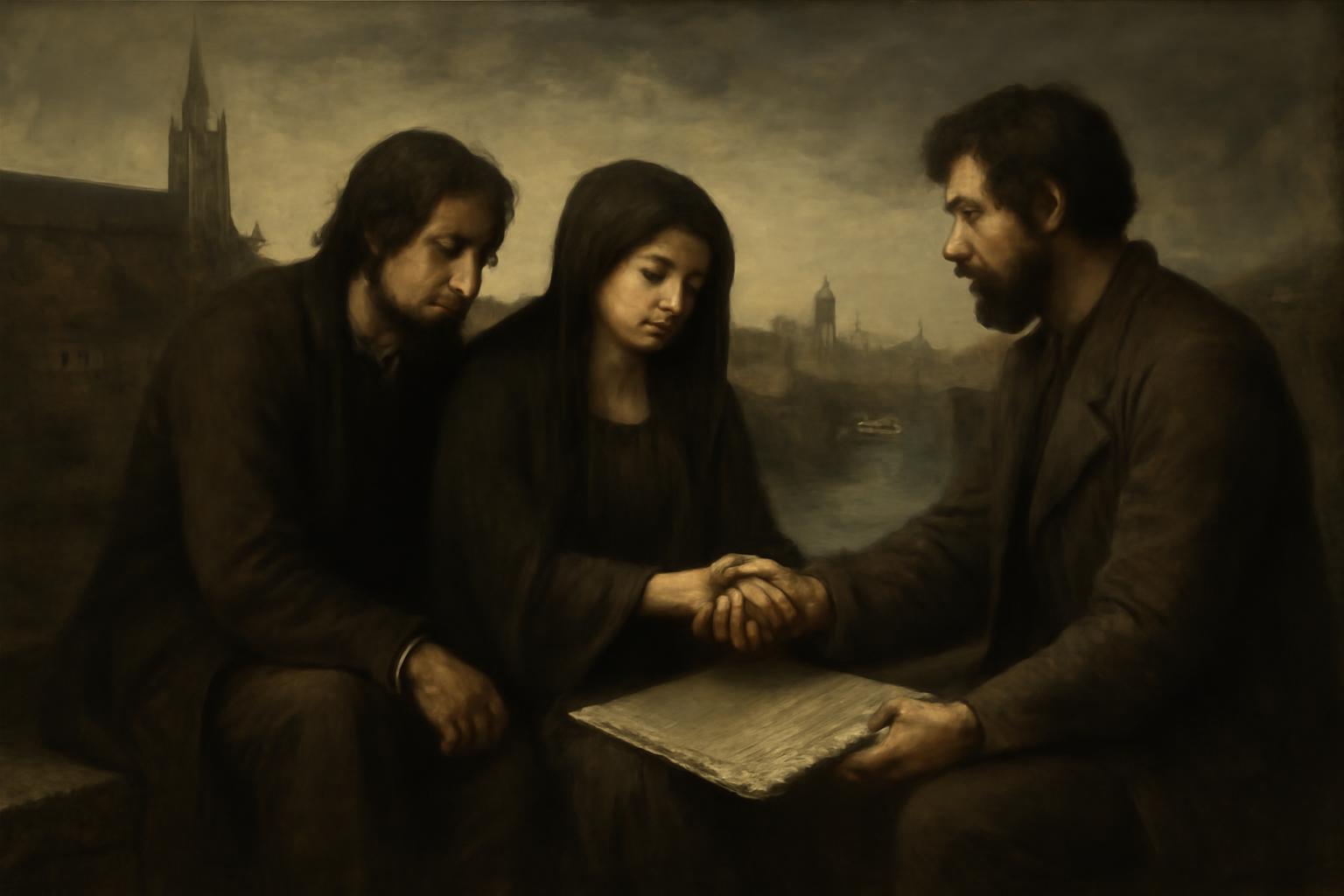On the banks of the Main, where the baroque shadows still argue with the river, two days of speeches creak like a wooden ship seeking a harbor, and the old bridge becomes a skeletal promise: a crossing, not a cure. They gathered in Würzburg, under the sign of Würzburg 2025, where Hoffmann hosts the gathering and the CSU’s resolve is pressed into a public confession of sorts, while Spahn and Miersch raise a selfie to seal a moment that dares to pretend it can outpace history. The image—two men of competing destinies flanking a third—reads like a tableau from a modern tragedy: the act of unity staged atop a relic, as if the future could be hoisted by a grin and a slogan.
The coalition poses as a bridge to the future, a monument to stabilization in a world allergic to permanence. Yet the air carries the ash of recent weeks—the failed bid for a Federal Constitutional Court judge, the frictions around judicial nominations, the tremor of security talk, the tremble of tax and social policy. The mood is to acknowledge missteps and to lay the groundwork for a more constructive working relationship, not a purge of party lines but a trimming of them until they resemble something pragmatic and ship-shape. The aim is not triumphalism but a concrete working program, a ledger of steps rather than a sermon about principles.
If one listens with the patience of a scribe who has learned to expect misfortune as a scholar expects night, the agenda sounds like a careful calibration of trust: frank talks about what went wrong and what went right, a first balance of a coalition’s performance. And yet even as the rhetoric promises candor, the theater hints at inevitability: the political will to govern, the fear to disappoint, the stubborn hope that a nation can be steered through the shoals by a shared map rather than by noble fantasy.
Security, too, keeps its somber clock in view. NATO Secretary General Mark Rutte’s anticipated visit marks a reminder that the question of safety is not a rumor but a weather system—one that voters feel in the marrow of daily life. Würzburg becomes a crucible where the big issues are weighed not as abstractions but as burdens, a weighing of what can be held within a social frame and what must be let go of. They outline where they stand in agreement on social policy, housing, childcare expansion, and immigration control, and where they differ, with the insistence that anyone in need should remain within Germany’s social system. A careful partition of mercy and measure, to be sure.
Spahn speaks of shifting the conversation from party programs to a broader working program; Hoffmann replies, with a confidence that borders on fatalism, that the coalition already possesses the answers for today’s challenges. If we listen closely, we hear the old energy of a republic trying to carve a path through the fog: not a new dawn, but a plod toward a method. The talks, it is said, reflect a wider plan for an autumn of reforms—an autumn that may or may not yield fruit, but at least promises a harvest of policy rather than spectacle. Bürgergeld sits on the table, a symbol perhaps, but not the sole focal point; the aim is to map common ground and translate it into practical steps, to build on the cabinet’s already tread steps.
In this mood-cue of political theatre, one hears the fissures beneath the rhetoric—the ego’s tremor, the fear of a future that may demand more than half-measures. And one cannot help but hear the eternal drumbeat of Nietzschian admonition: the will to power wearing the masque of consensus, the fear that unity is only a breath away from dissolution, the suspicion that every bridge might quanto suffocate under the weight of its own promise. The Greek chorus in the background murmurs of hubris and nemesis: a coalition that would heal the nation risks becoming a stage for its own downfall if the path from agreement to action remains a promenade rather than a march.
Thus Würzburg becomes a fragment of a larger, perpetual tragedy—a civilization balancing on a thread, seeking to redeem a future by insisting on a shared program while knowing that the abyss of uncertainty is ever patient, ever hungry. The spectacle of unity on the bridge is elegant enough to console a weary audience, yet it is not enough to quiet the centuries’ ache for certainty, for lasting grandeur, for culture that does not crumble when confronted with the plain facts of power and time.
And so we watch: the attempt to translate intention into policy, the longing to secure what must be secured, the labor to design a road that may endure the next wind. In this, one recognizes the melancholy core of Western culture—the impulse to govern with virtue while knowing that virtue alone does not forge the weather of history. If the autumn of reforms arrives, it will arrive as a demand for discipline, not applause; if the bridge holds, it will be because the builders learned to bear the silence that follows the celebrating of beginnings. In the end, the scene at Würzburg is less a triumph than a reminder: the republic’s art remains the art of walking a line between what we wish the city to be and what the hour permits it to become, while the gods, patient and weary, look on and wait for us to choose again, and perhaps wrong again, as all souls must who would bend the future to their human will.
